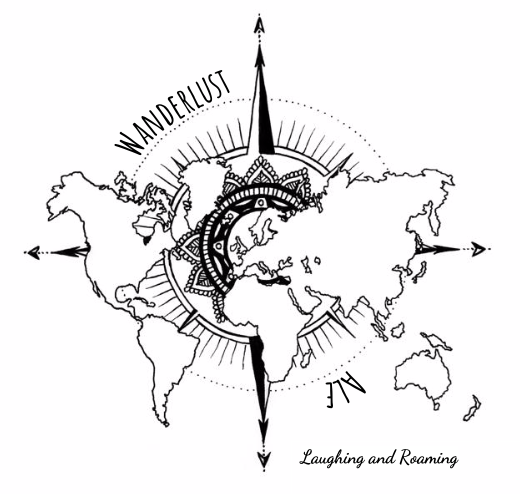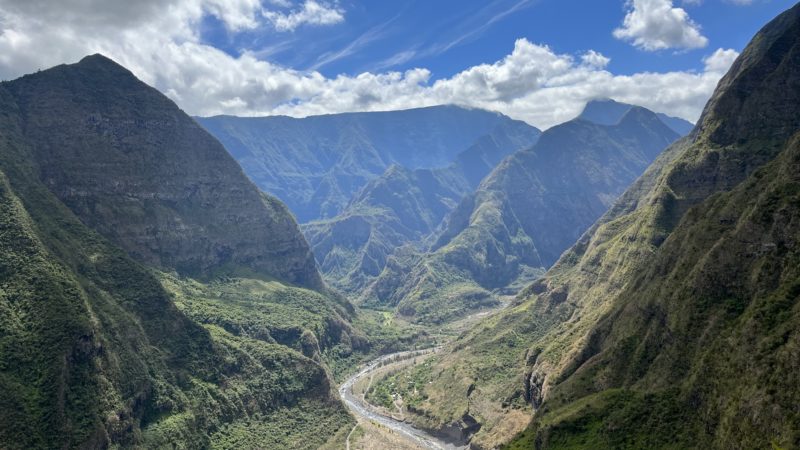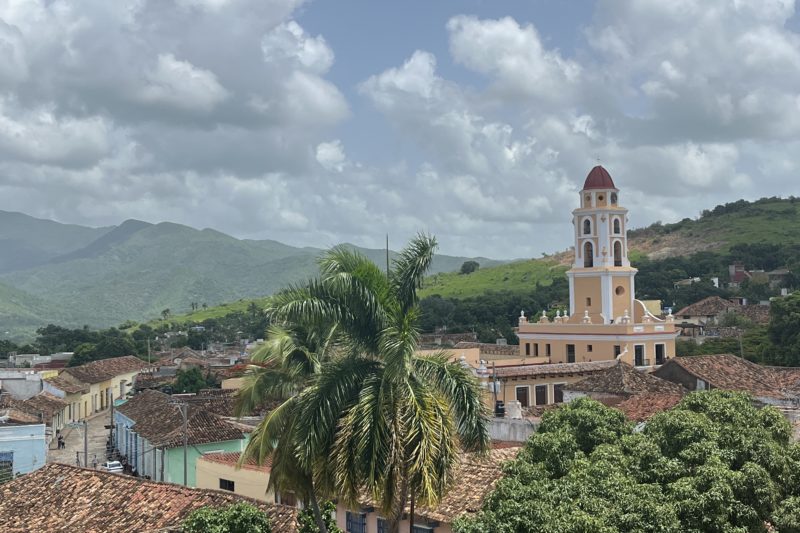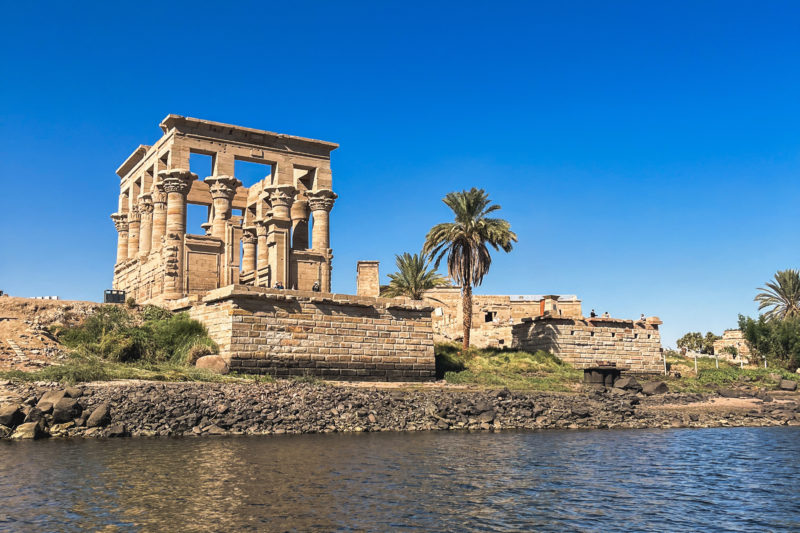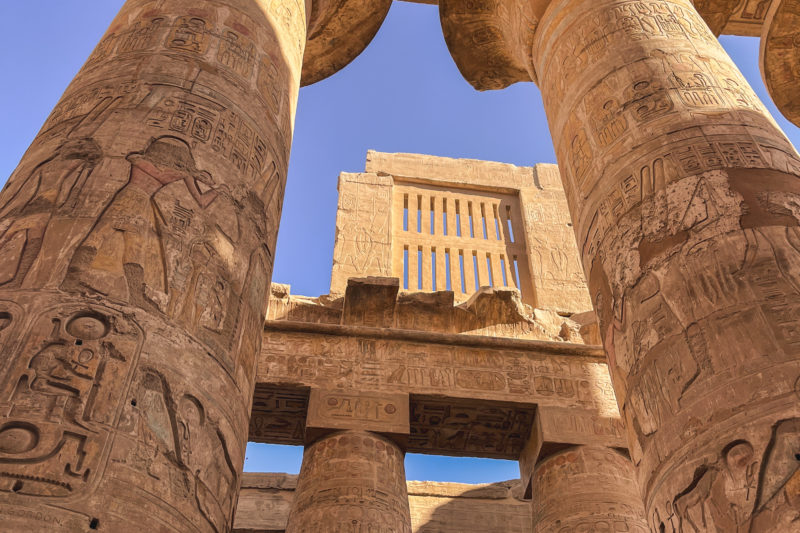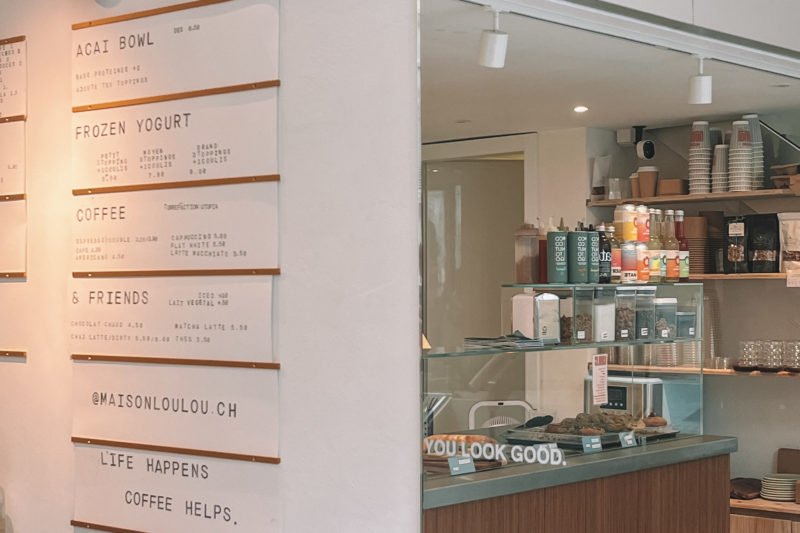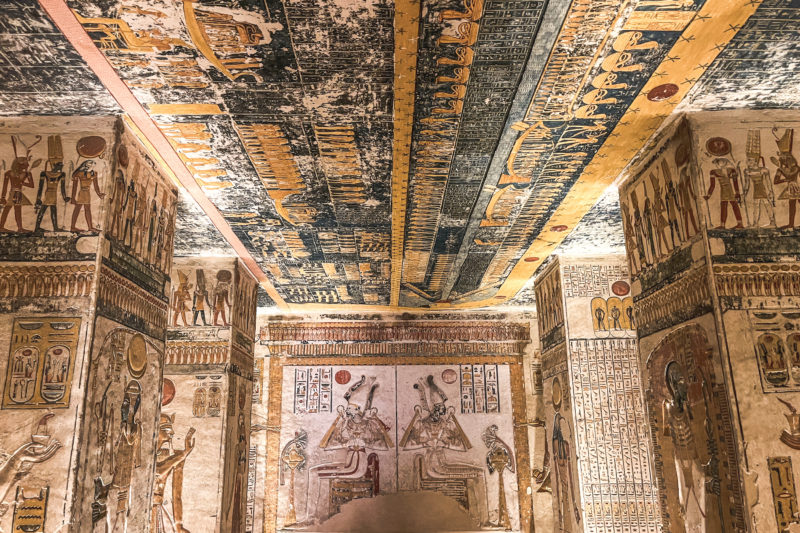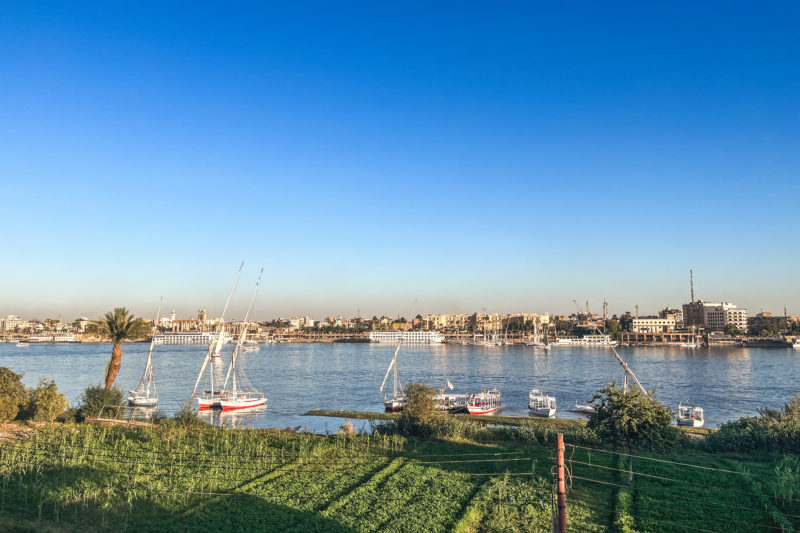A nature destination beyond compare, Réunion Island is a small, unspoilt jewel in the middle of the Indian Ocean. Réunion is the result of an unlikely marriage between volcanoes and the sea, giving it a unique charm and breathtaking beauty. You’ll be transported to a world apart, where nature reveals itself in all its splendour and diversity.
Réunion and its 3 cirques
The island is known for many things, but what sets it apart are the three jewels that make it up: the cirques of Mafate, Salazie and Cilaos. But make no mistake! I’m not talking here about a troupe of clowns and acrobats, although that could be an interesting experience too! The cirques we’re talking about here are huge volcanic craters transformed into impressive landscapes.
The Mafate Cirque is a place of wild, unspoilt nature that seems to defy time and the elements. The cirque is actually an immense natural amphitheatre surrounded by cliffs. Imagine walking along winding paths, surrounded by lush vegetation and breathtaking panoramas. There are no roads or cars here, just a soothing, rejuvenating atmosphere that only the adventurous can access. To get there, experienced hikers follow the trails, while the luckiest can opt for a helicopter trip offering breathtaking aerial views.
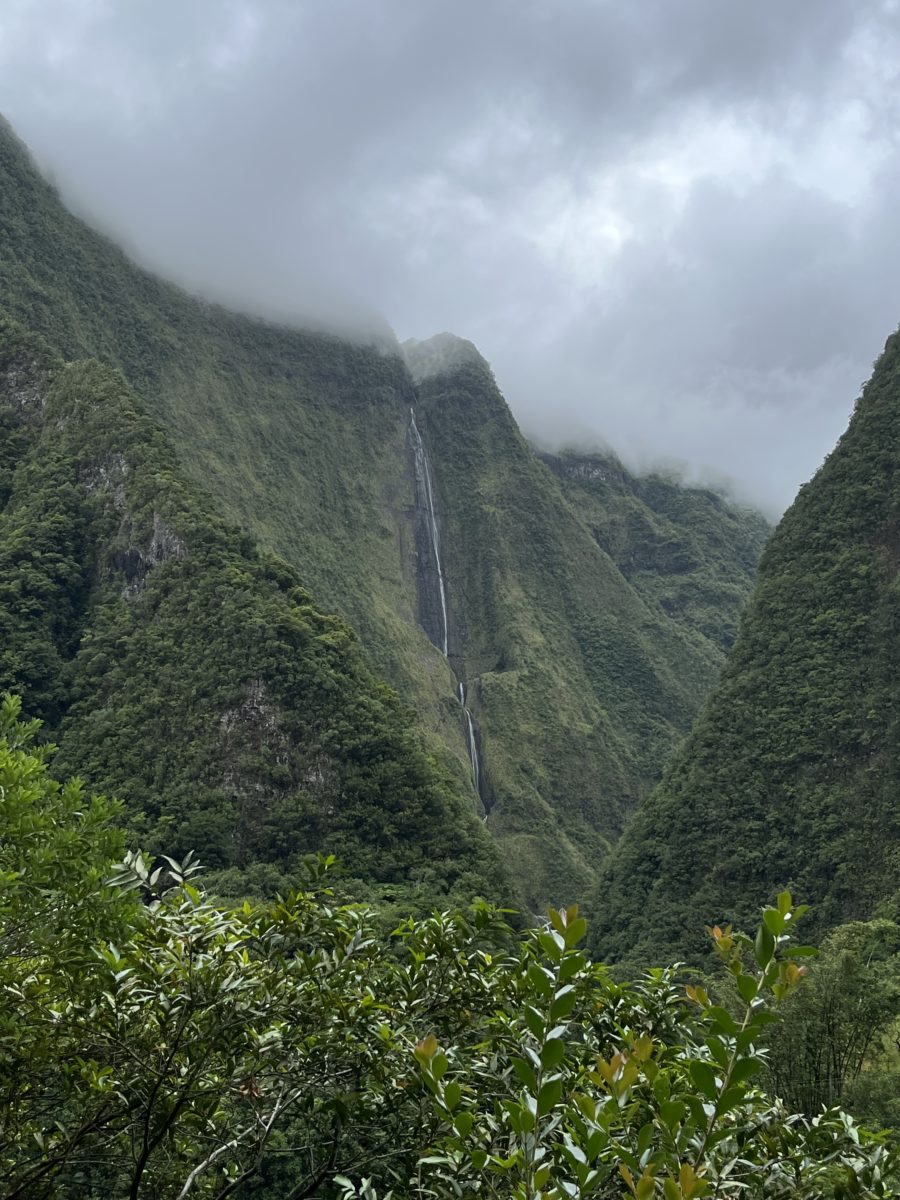

The Salazie Cirque is a veritable kingdom of waterfalls and verdant mountains. You’ll be greeted by nature’s bounty, with lush tropical forests and majestic waterfalls that seem to rival urban skyscrapers. The hiking trails will take you to breathtaking panoramas, where the fresh air and the murmur of the waterfalls will envelop you in an aura of adventure. Salazie was a soothing, rejuvenating experience amid this veritable tropical paradise, even in the rain. Indeed, even if the downpours aren’t too long when it rains, it rains.
Finally, the Cirque of Cilaos, perched high up in the mountains, offers a wide range of panoramic views. Famous for its thermal springs with soothing properties, Cilaos is the ideal place to relax and recharge your batteries, especially after tackling the road that leads up to it (not an easy one, I’m not sure my sister’s old car has fully recovered).
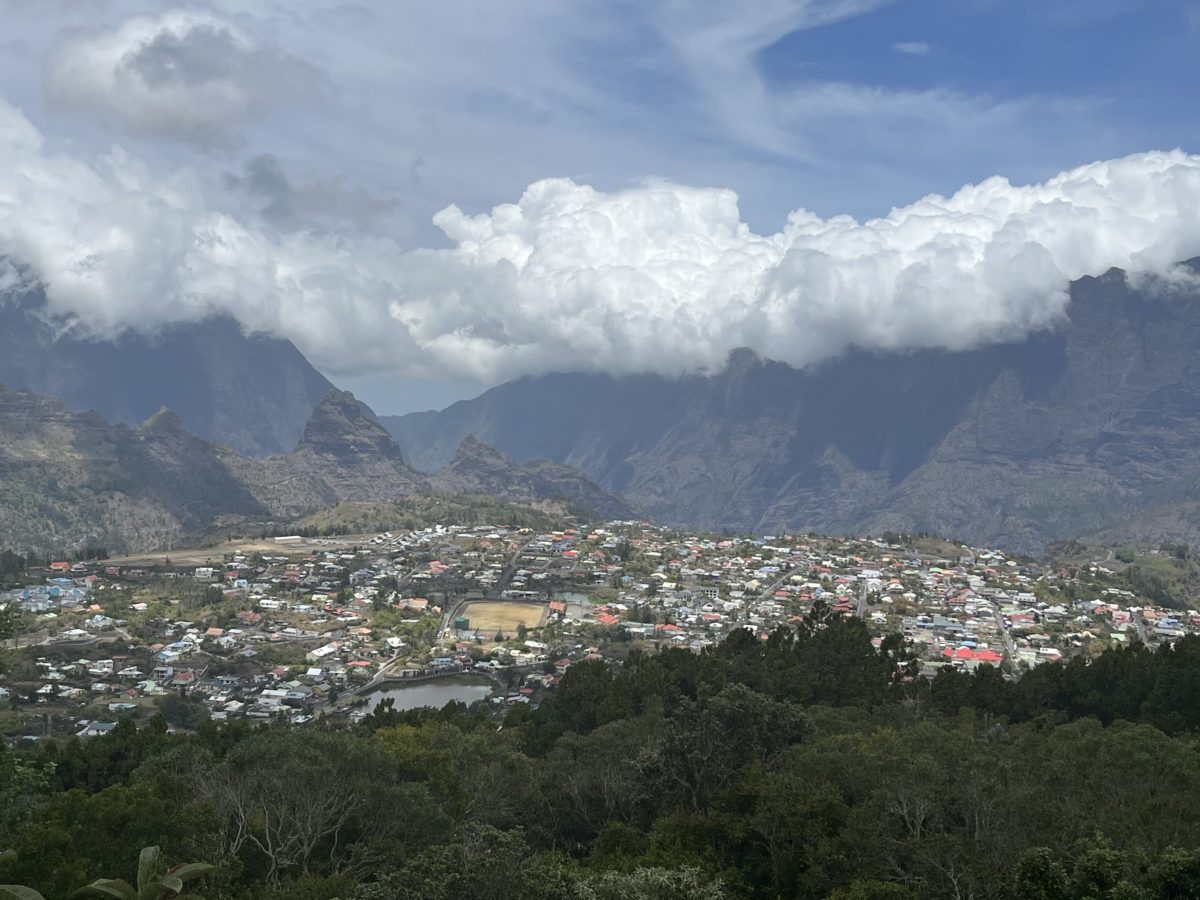
I’ll give you a more detailed account of these last two cirques, as the current article is dedicated to Mafate, the most beautiful (and hardest) adventure I’ve ever had on Réunion Island.
Mafate is the most isolated cirque in the French department. Why is that? It’s only accessible by foot. But I promise you, it’s well worth the effort! As the (French) saying goes:
A feast for the eyes, a feast for the calves
Initial pieces of advice on hiking to Mafate
Before embarking on this adventure, it’s essential to have a clear idea of what to expect! Although the cirque is popular with tourists and hikers, accessibility can vary.
The first thing to note is that you’re not a local! The time that inhabitants can describe a potential itinerary in the cirque may be biased. This is because they know the terrain well and are generally excellent hikers, which my sister and I were not when we set out on this adventure.
I’m used to going on long hikes, and in summer I roam the Swiss mountains (here the Limmernsee adventure) in search of new nuggets, but I can’t claim to be a good walker (I have problems with my knees and back, and my motivation can quickly wane when the monotony of a walk overwhelms me and takes me away from the beautiful scenery around me). What’s more, my sister had never done a walk lasting more than 3 hours. Poor her; she didn’t know what she was going to have to face. And yet she managed it like a boss!
So to return to the original point, Mafate is the most isolated cirque on Réunion Island, and getting there takes planning. On Réunion Island, there is little room for spontaneity. The weather can change in two seconds, certain times of the day may be more conducive to discovery (particularly early in the morning) and distances are not always straightforward. In short: be prepared!
Ideally, if time and weather permit it, I’d advise you to visit Mafate as part of a two-day excursion: in other words, to spend at least one night in the cirque. Unfortunately, as my time on the island was limited and my sister couldn’t take days off, we decided to explore Mafate on a one-day hike.
My sister’s roommate, a keen hiker on the island, gave us some good advice. She advised us to take a route, which she describes as her favourite, and which passes through the most famous entrance to the villages of Mafate: la canalisation des Orangers, leaving from Sans-Soucis to reach the heart of the cirque before descending via the Rivière de Galet and returning by 4×4.
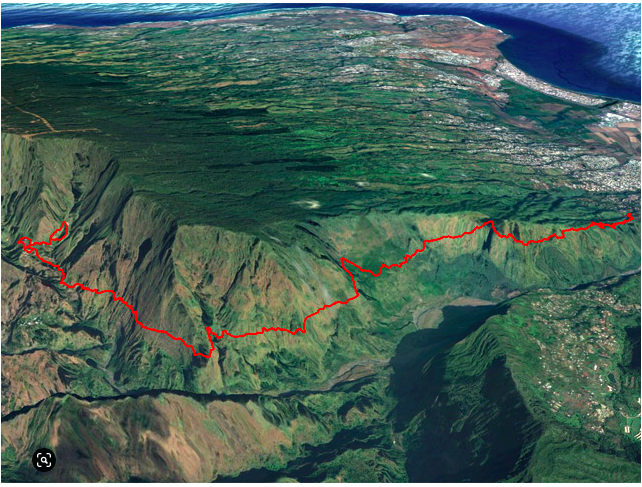
Whichever entrance you choose to Mafate, we advise against leaving your car unattended. Cases of vandalism have already been reported, so it’s a good idea to protect yourself against such incidents, even if they are not systematic. For a stress-free departure, I advise you to park your car in a secure car park or to take the bus. And don’t leave anything in the car that might attract attention.
Hiking in Mafate: la canalisation des Orangers
We started our day by going to the St-Paul Savannah Run Market to park the car in the shopping centre car park. As I advised earlier, don’t leave any belongings in the car, as many offences are committed. We then took the 74 bus from the Savanna stop to Grand Contour S.Souci. This bus does not run every hour, click here for timetable information. We were about ten minutes early because, although there are official timetables, they are very rarely respected. The bus arrived about ten minutes late but took us without any problems to the starting point of the famous official path.
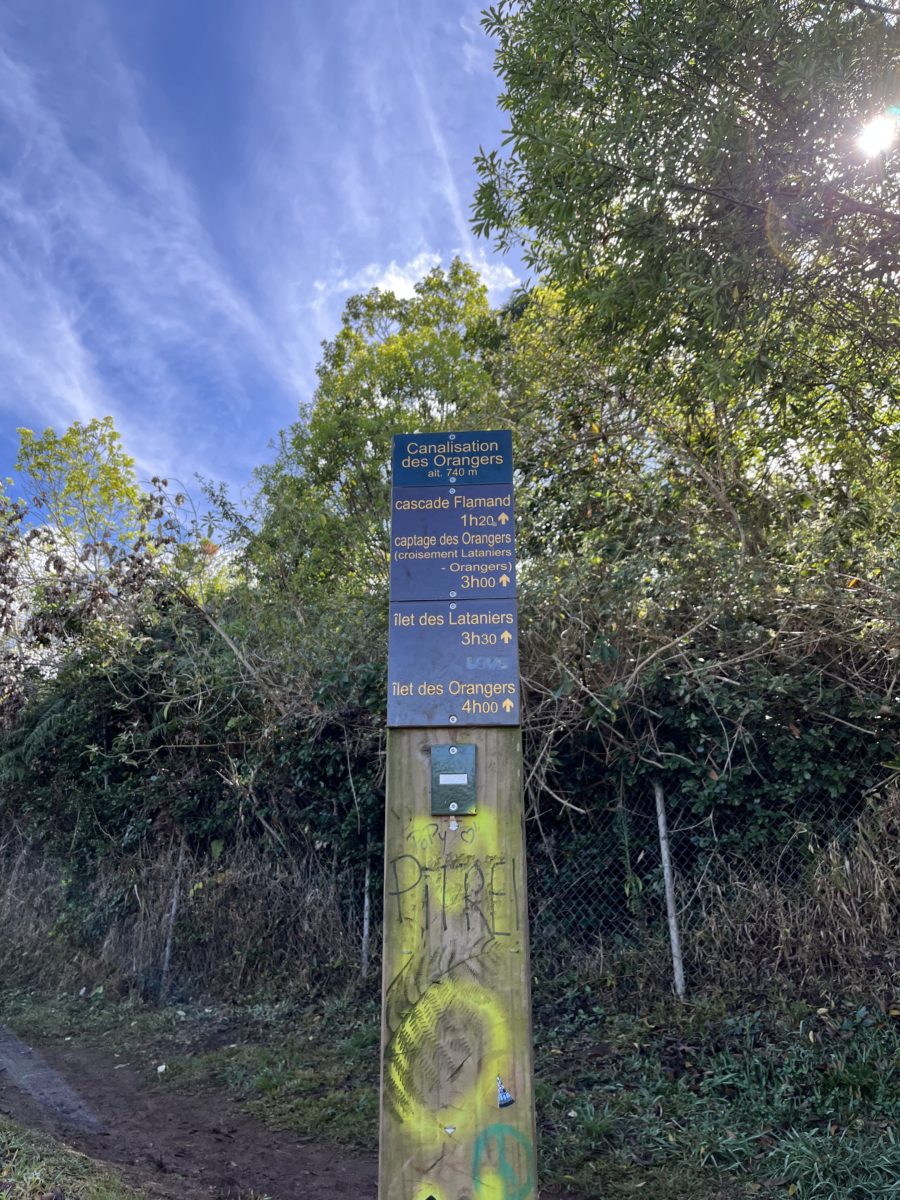
You need to get off at the Citerne Rouge stop. A few metres further on, you’ll see a red cistern, which is the official starting point for the expedition. Before you reach the actual official trail, you will have to climb for about an hour, either on well-marked paths or through the forest. At that precise moment, I was wondering what I was getting myself into, because even with my good walking shoes, the path was often muddy and slippery, and following bad weather during the night, I found myself more often on my knees or on all fours climbing through the forest than for the gentle start to the walk that my sister’s flatmate had promised us. I soon realised that my clothes were going to turn a dirty colour quicker than I’d anticipated.
But it was a gradual climb that meant we had to be patient before discovering the majestic opening onto Mafate because once we’d done that, we arrived on the official canalisation des Orangers trail, which winds along the ramparts of the Mafate cirque.
All the anger of being covered in mud at 8 a.m. vanished as we discovered the breathtaking view in front of us.
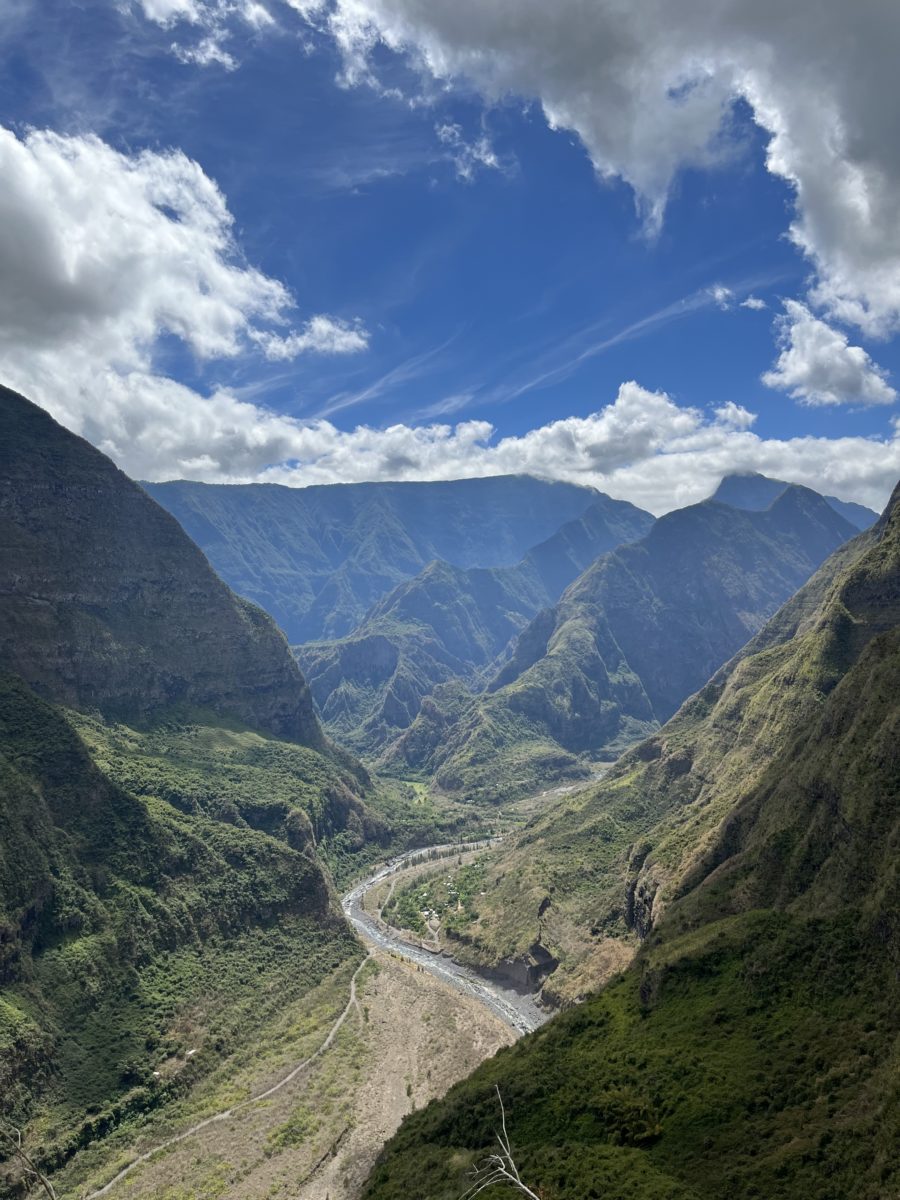




Then we noticed that the rest of the hike was going to be relatively flat, which is quite rare for the Hauts de la Réunion. So it was that we set off, all revitalised, with an impressive precipice on our left. A few days earlier, we had taken the Cap Noir walk, which leads to a viewpoint over Mafate, and from the Canalisation, we could see very clearly the path we had travelled on the other side of the chasm that leads to the cirque of Mafate.
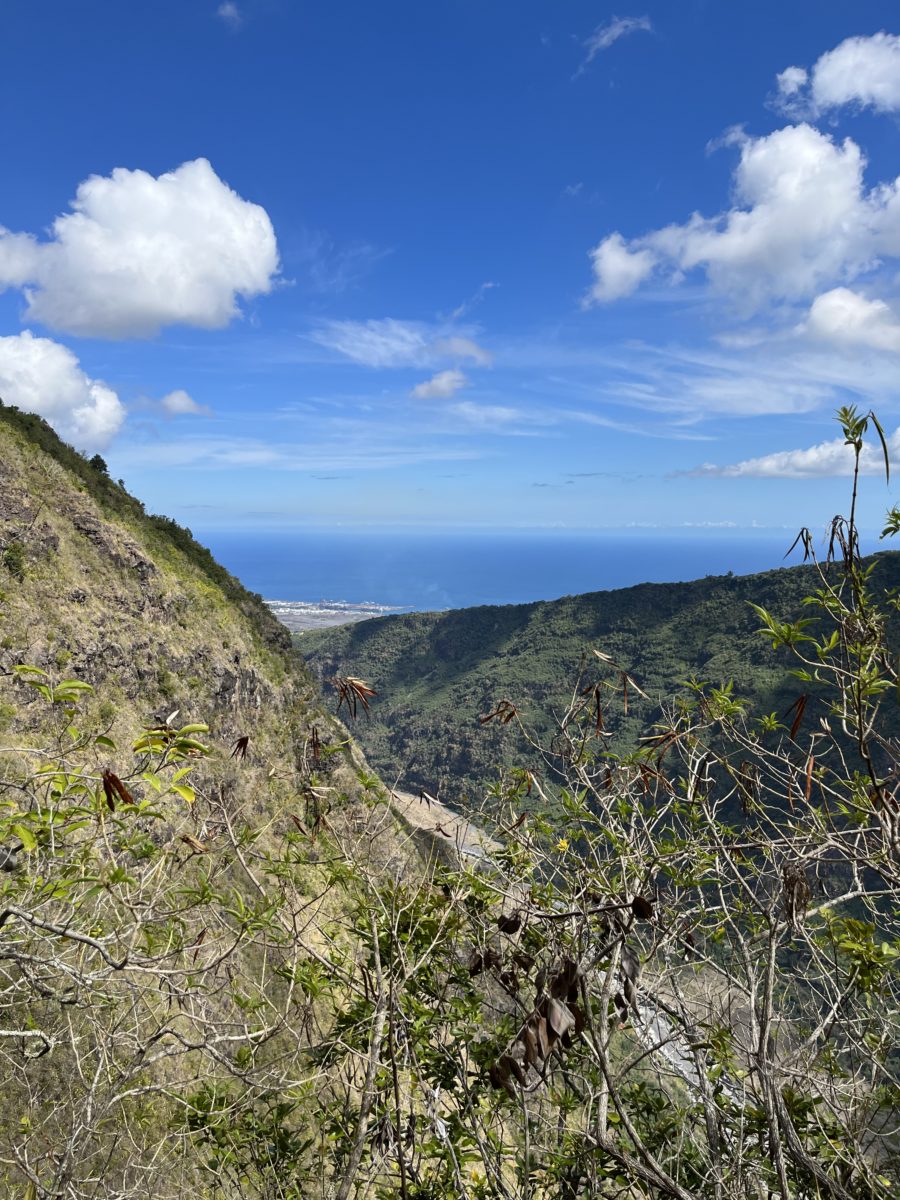





For a good two hours, we walked along the canalisation des Orangers path, aiming for the îlet des Lataniers to buy some refreshing drinks, as it was the only Creole village on our route. This is also an important point, logical for any hiker, but worth remembering. Take several litres of water. Depending on when you are in Réunion, temperatures can be high, even in the cirque. I had almost used up my 2 litres of water in just a few hours.
As we rounded a bend in the road, a new view opened, right up to the one that made us stop (no, no, we didn’t want to catch our breath in 35 degrees with no shade). Ahead of us stretched the famous Mafate landscape, a vast natural amphitheatre, a cirque formed by imposing mountains. In the centre, isolated hamlets nestled in valleys, like rare treasures lost (and still quite far away when you’re on foot) in the middle of nature’s immensity.
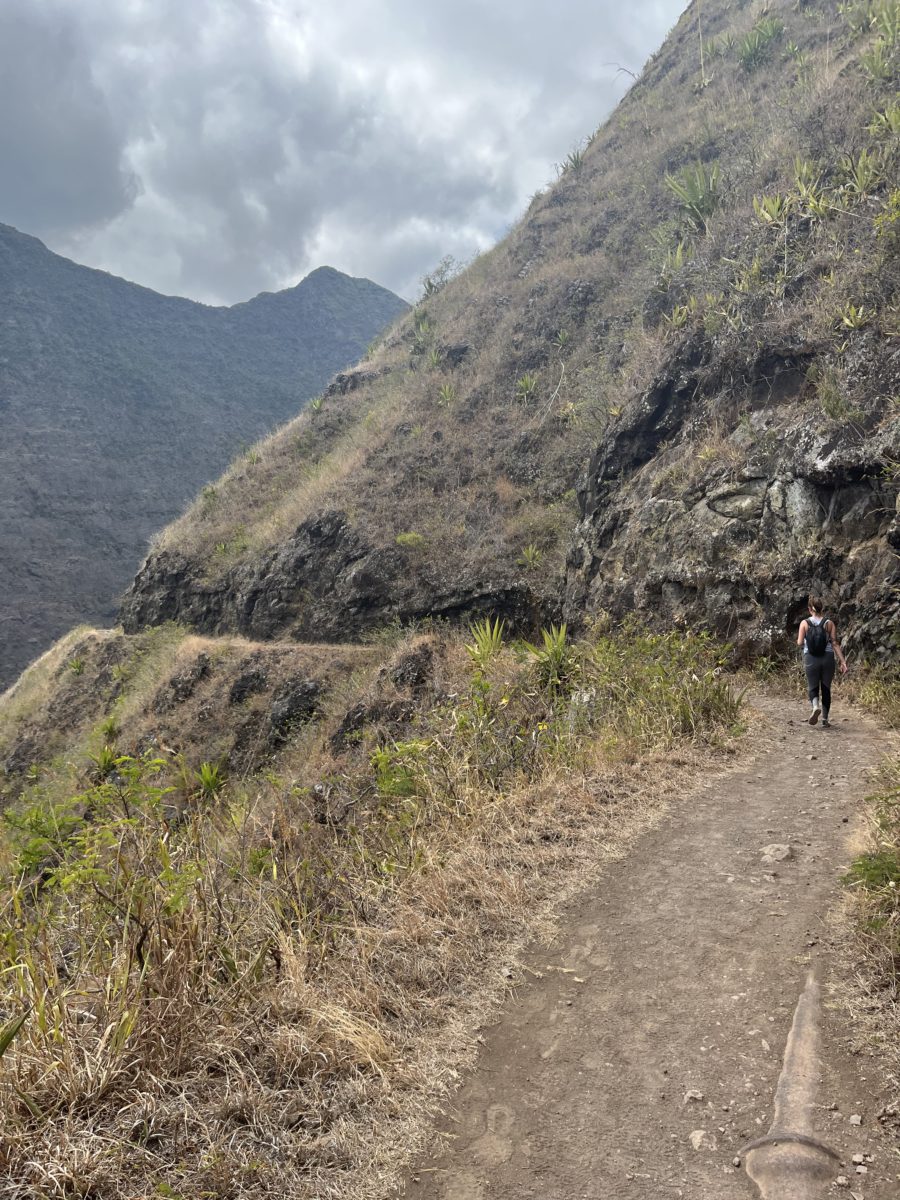






Although I was amazed at the beauty of the surroundings, I was still keeping an eye on the time, as we were already ‘late’ according to the official indications of the websites and my sister’s flatmate. But above all, I was slowly realising that my knees were going to suffer in the face of the difference in altitude that awaited us on the way to Dos d’Âne, at the bottom of the precipice. Despite the tiredness that was beginning to set in, we were determined to enjoy the beauty of the scenery.
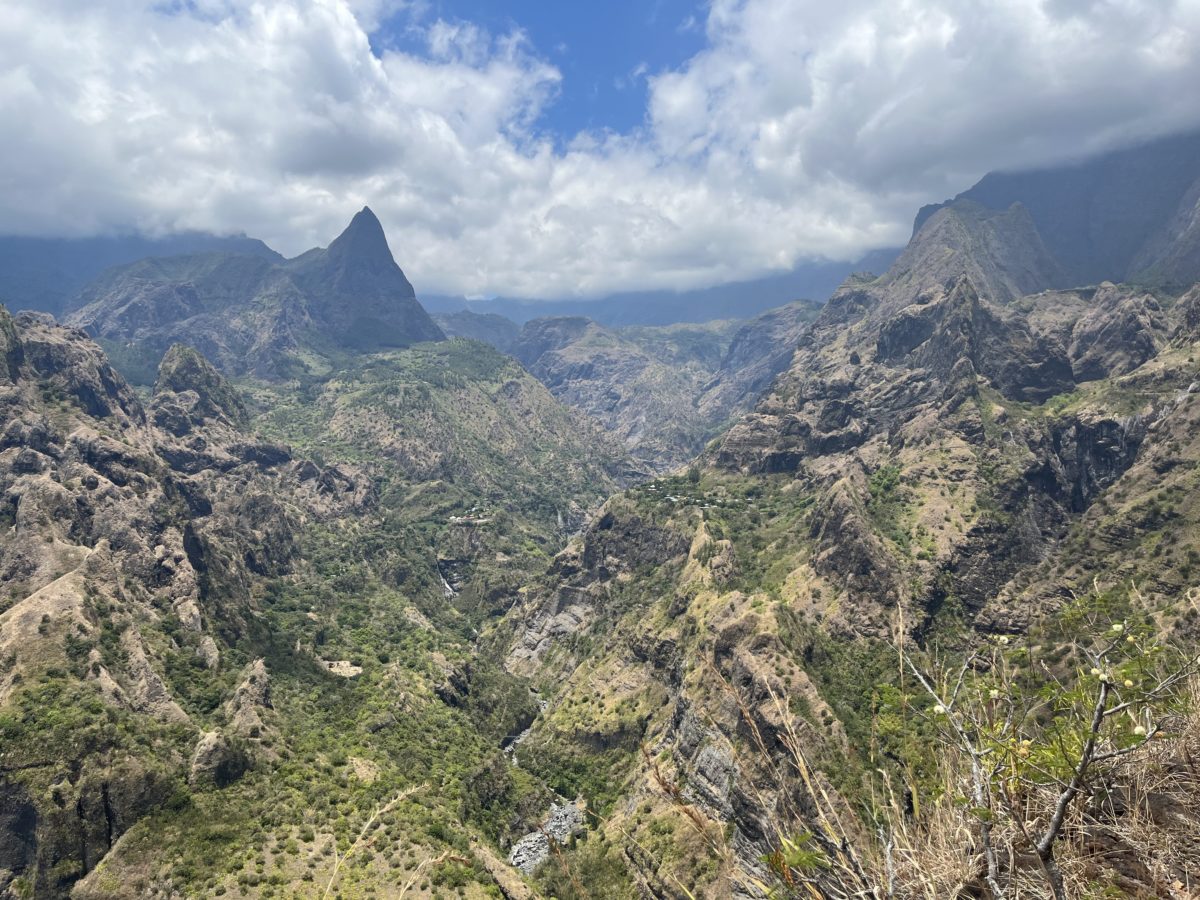





It’s moments like these that give you the impression of being privileged witnesses to a rare natural spectacle, untouched by the modern world. Naturally, you quickly reconnect with civilisation, as the route is well-trodden by hikers. Although we didn’t have the same objective as the other hikers, we knew that we would have more peace of mind for the rest of the itinerary, as we left the Canalisation des Orangers.
The canalisation des Orangers takes hikers to the ilet des Orangers. However, as this was off-centre about our itinerary, we diverted to the ilet des Lataniers and went down to the Rivière des Galets.
I’ve mentioned the term îlet several times, and it refers to modest hamlets or isolated villages comprising just a few houses. These enclaves are usually located in the heart of Réunion’s cirques, nestling on plateaux that are ideal for growing crops, allowing the inhabitants to live authentically and almost self-sufficiently. I say “almost” because many helicopters bring in food, medicine, etc. from Saint-Denis or other towns on the island. Living conditions are not always easy in these hamlets, and certain problems can emerge. Most of the inhabitants make their living from tourism and the income from B&Bs and small restaurants.
For example, on the îlet des Lataniers, there are several B&Bs for hikers, as well as a campsite. For us, it was an opportunity to buy a nice, cold, sweet soda to give us strength and have a picnic, before starting the (painful) descent to Rivière des Galets and the return journey to Dos d’Âne.
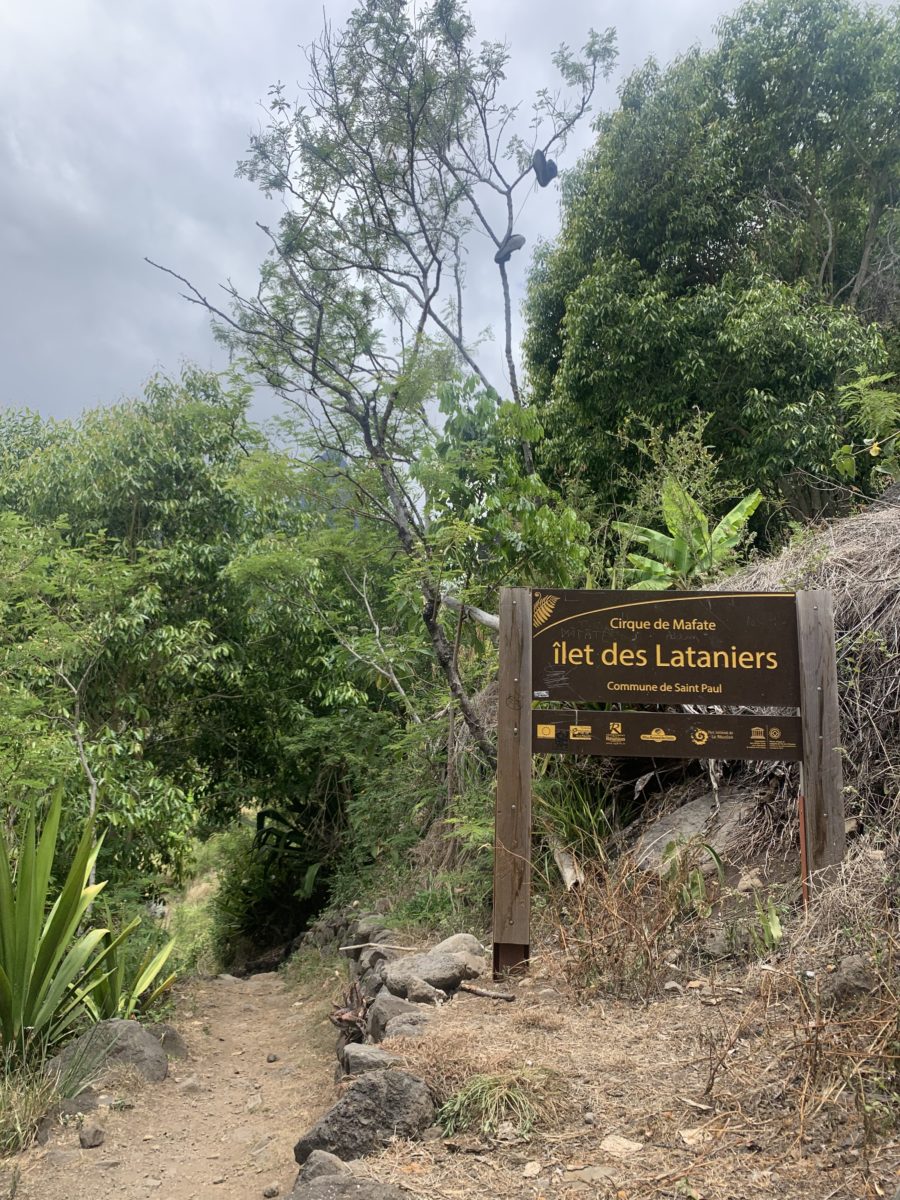
I’m not going to lie, this part of the hike was almost a nightmare, my knees deciding not to cooperate any more as I watched my sister scramble along on those two fit knees, like a capri flying over the difference in altitude, and me barely dragging myself along to survive to the end. Every step became a challenge. The hours of walking were beginning to take their toll on our aching bodies and our muscles were screaming their displeasure, but I felt free, lost in the middle of Reunion’s nature.
Arriving in the valley, we discovered that we would have to cross the Rivière des Galets (Rivière means river) several times, as the path was uncooperative (as were my knees).
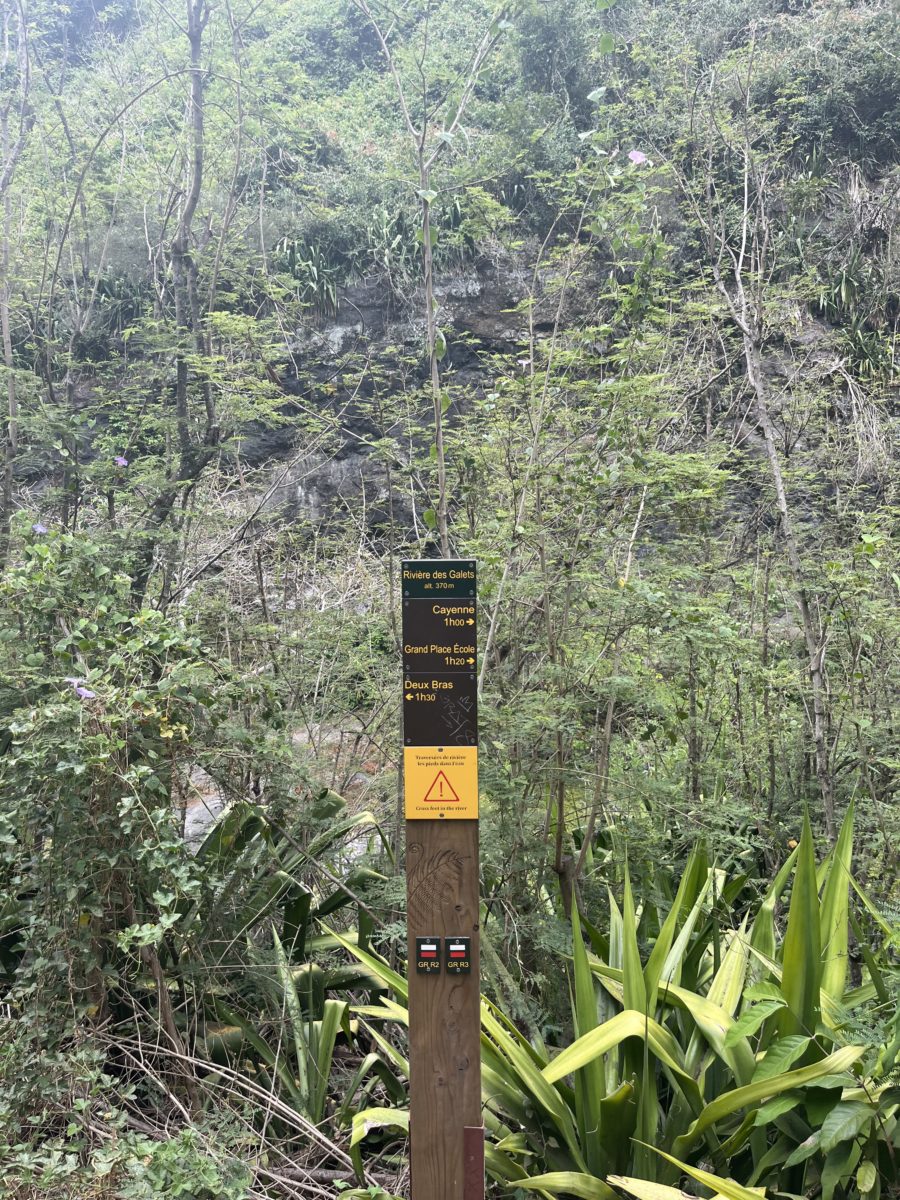





Initially charming, almost an adventure within an adventure, after a few crossings we were fed up of walking with wet feet in our walking shoes. At that point, I was dreaming of my flip-flops, which were waiting for me at home. So, if you’ve got room in your bag, take some flip-flops with you! The path can be steep (when it’s not in the water), but you’re on level ground, so walking shoes are less advisable.
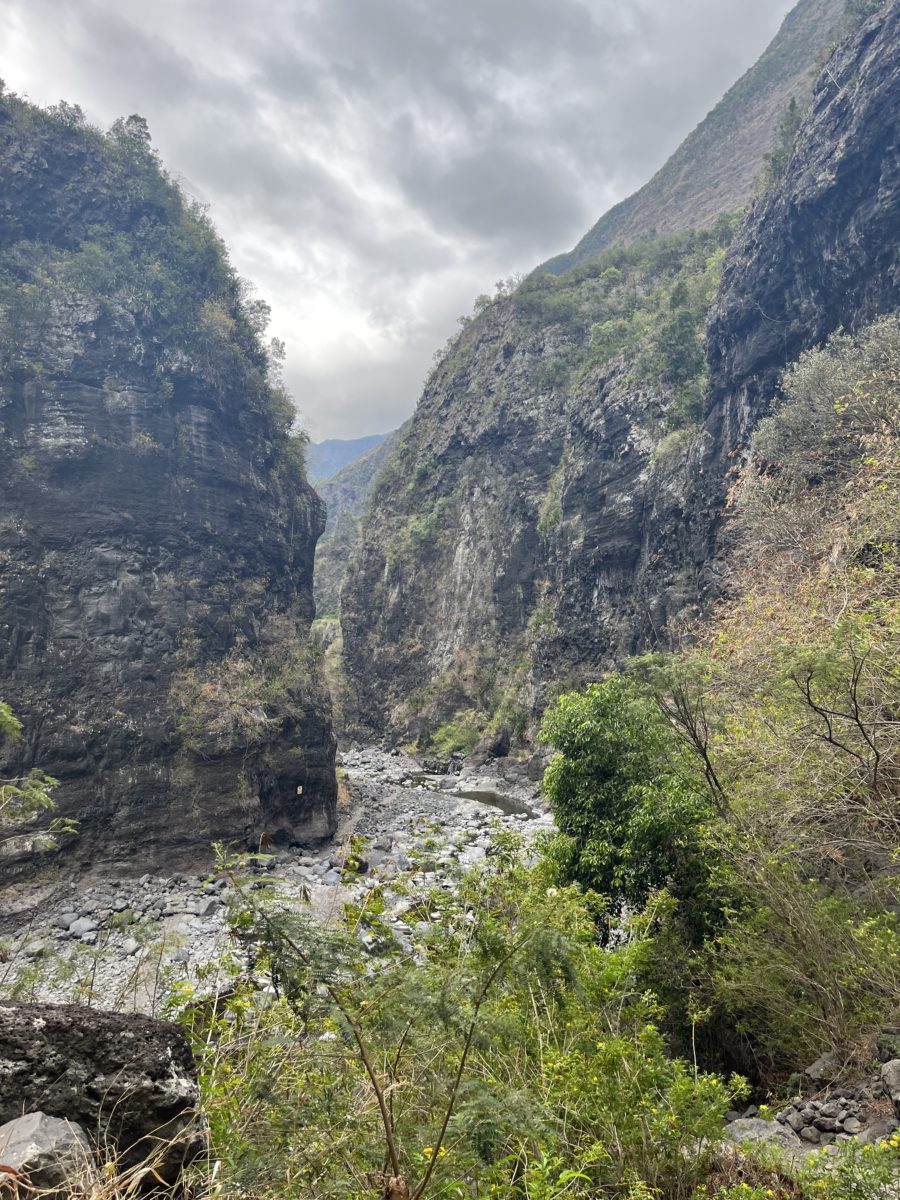


In the end, it took us a few hours to get to the 4×4 departure point, where a large number of hikers were already waiting. We’d booked the day before by phone with Alain Legros, which guaranteed us two seats in the back of the 4×4 anyway. An up-to-date guide to the providers of this service can be found here in French.
It was great fun to finish our trip this way, in the 4×4 standing up in the back, hair blowing in the wind. Frankly, don’t bother hiking the remaining 19 km (!!!!!!) to reach civilisation, book a 4×4. Prices have apparently risen since our visit in autumn 2022 (we each paid 10 euros). You should now expect to pay around 15 euros per journey.
Our parents were waiting for us at the arrival point, to take us back to the Savannah Run Market to pick up my sister’s car.
After such an intense day of effort and adventure, I suggest you head for a fairly touristy but comforting spot by the ocean, to unwind but above all to enjoy a good shake-down in the ocean and a restaurant in Boucan Canot.
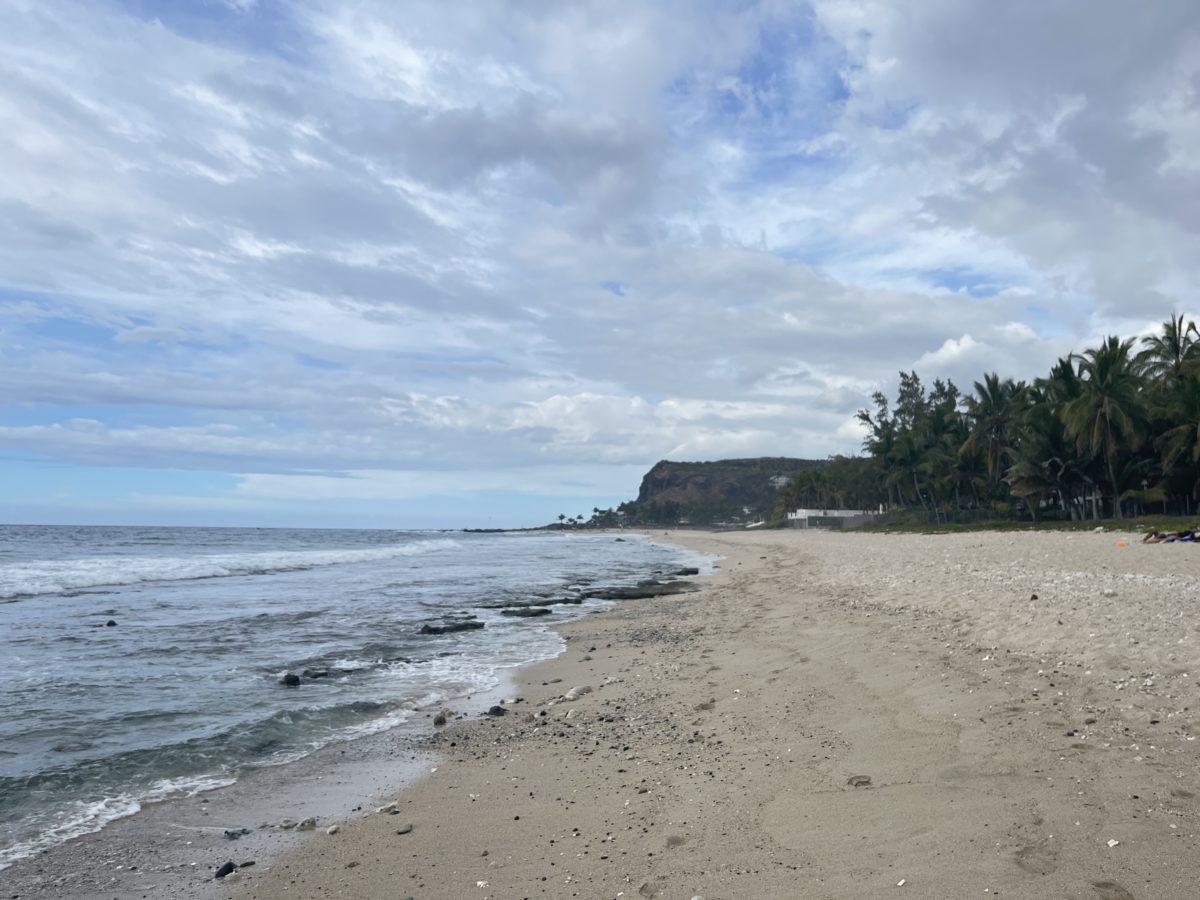

Alternatives for exploring Mafate
There are several alternatives if you want to discover Mafate differently. I’ll soon tell you about two that I’ve tried out: the sunrise at Piton Maïdo and the Cap Noir hike.
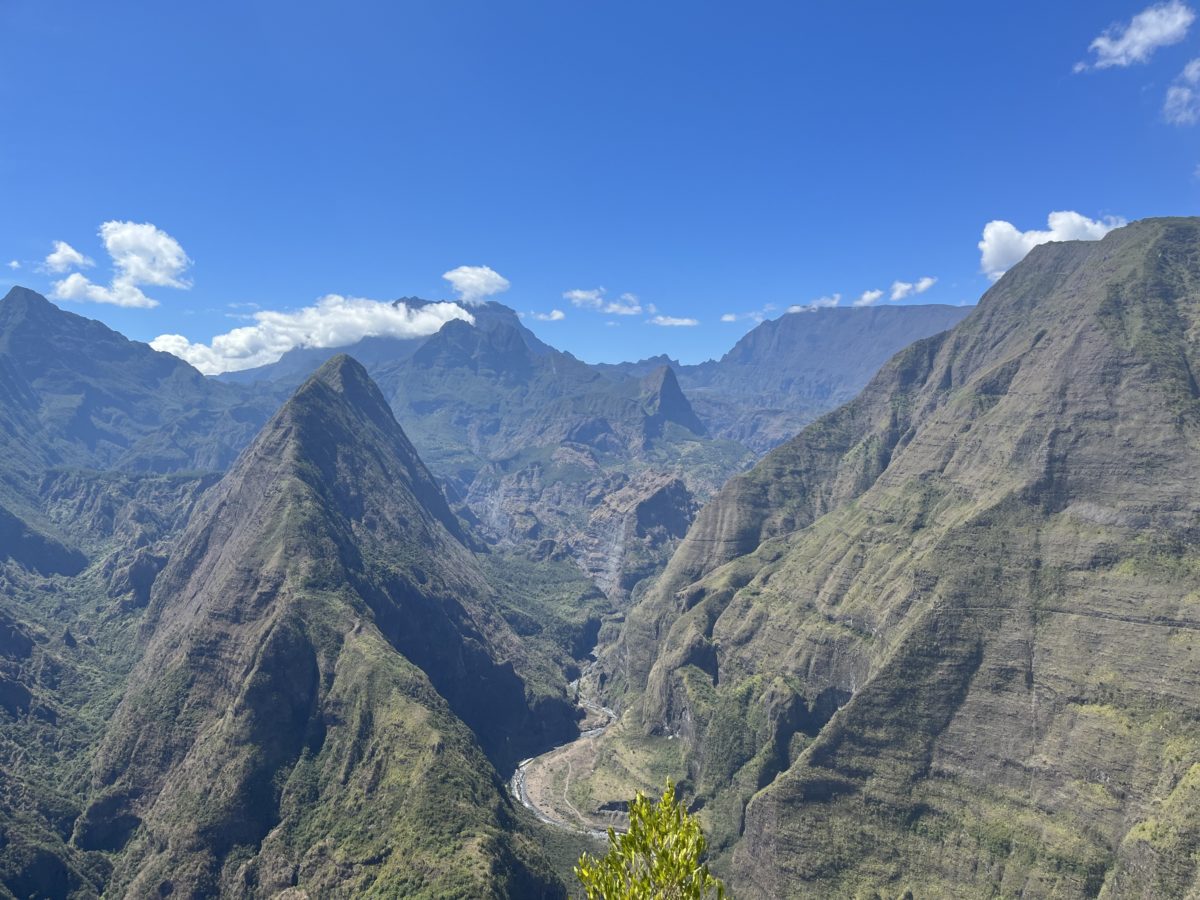
Mafate can also be reached from the neighbouring cirque of Salazie via the Col des Bœufs or from Cilaos via the Col du Taibit.
Of course, you can also come by 4×4 to Dos d’âne, and then set off on foot along the Rivière des Galets, taking the opposite route to the one I took with my sister.
Summary of the advice given in this article
Before you set off, here are a few points to bear in mind for your excursions in the Mafate region:
- If you’re planning to spend the night in Mafate, remember to book accommodation well in advance, as places are often limited. And don’t forget the need to withdraw cash, as there are no cash dispensers on site, and some shops and accommodations don’t accept bank cards.
- Take plenty of water with you, as the trails are in direct sunlight and the rays can be scorching!
- Don’t forget to bring sun cream and hats or caps for protection.
- Be vigilant about the weather; even if the morning is bright and sunny, a downpour can come quickly. Consider taking a rain jacket and a protective blanket for your bag. Consider also taking a jumper and a spare T-shirt. Don’t forget flip-flops, which can come in handy on the Rivière des Galets.
- Of course, you should also bring walking shoes.
- Make sure your phone is properly charged before you set off, and download a map of Mafate or of the hike you are doing (use randopitons.re, the bible of hiking on Réunion Island, for example), as most of the time, you won’t have a network.
Mafate was not just a remote Cirque, but an invitation to get lost in Réunion’s nature! Are you ready to take up this challenge?
